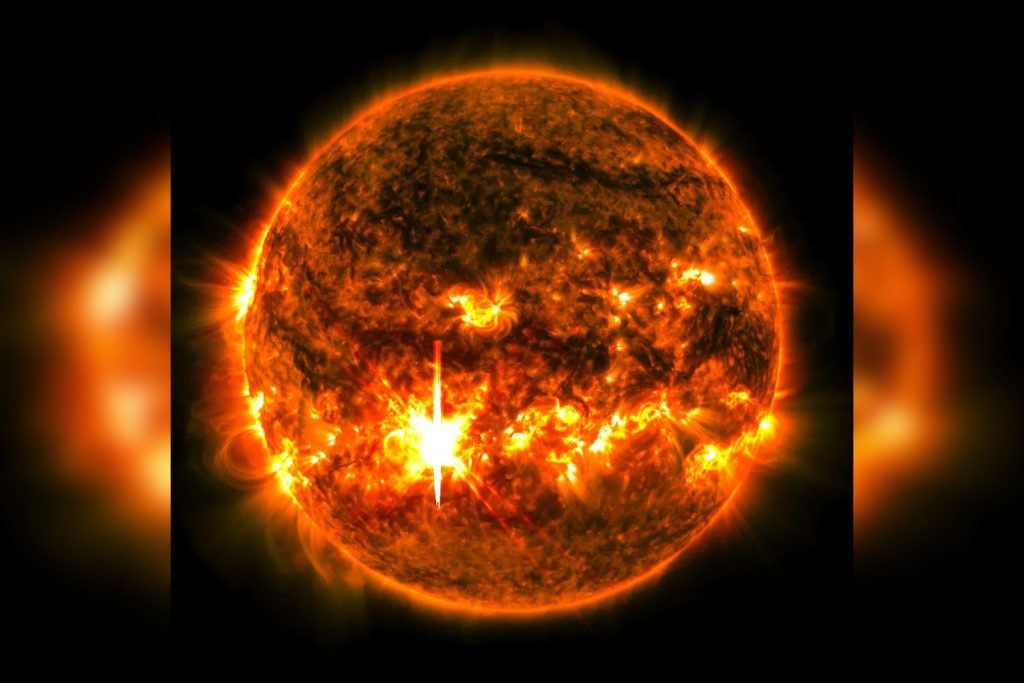
Earth Is About to Get Hit By a Major Geomagnetic Storm (Image Credit: Gizmodo-com)
A major geomagnetic storm is barreling its way towards Earth for the second time in five months, the National Oceanic and Atmospheric Administration warned on Wednesday. On the bright side, it could mean a reappearance of those spectacular auroras many of us witnessed earlier this year.
According to NOAA’s Space Weather Prediction Center, there’s a chance a G1, or minor, storm strikes Earth on Thursday, October 3, while a G3, or strong storm could hit the day after on Friday, October 4. Geomagnetic storms are caused by explosions on the Sun’s surface, such as solar flares, which can, in turn, send huge amounts of plasma shooting off into space, ultimately striking our planet’s atmosphere.
Exactly that kind of explosion occurred on Tuesday, when the second most powerful solar flare in the past few years erupted. The flare originated from an area of the Sun known for its numerous sunspots, called Active Region 3842, and, according to NOAA, was rated an X7.1. Flares are rated by their severity, with b-class flares being the weakest and x-class being the strongest. Each letter marks a 10-fold increase in power over the one lower on the scale, so an X7.1 is pretty damn powerful. In fact, it was the second most powerful of the current solar cycle.
Earlier, NOAA had warned that the flare may have led to an event called a coronal mass ejection, which is a massive expulsion of plasma and other solar particles, and that now appears to have been the case. Unlike sunlight, the solar matter doesn’t travel at the speed of light, and can take a few days to reach Earth. NOAA did not say the CME will definitely reach Earth, only saying that a geomagnetic storm is “likely” between October 3 and 5. The severity will be “dependent upon the orientation of the embedded magnetic field,” according to the alert.
While this can sound scary, the storm won’t have a direct effect on humans. The big risks are to sensitive electrical systems, such as power grids and satellites. NOAA said that threat should be “limited,” “minor,” and “mostly mitigatable.”
If you enjoy natural light shows, there may actually be an upside. CMEs can result in bright auroras in the sky, thanks to the same processes that result in the Northern Lights. NOAA said these bright auroras may be visible over many of the northern U.S. states, the lower Midwest, and even as far as Oregon.
Solar activity is cyclical, ramping up and down over periods that last about 11 years. We’re currently in the middle of the twenty-fifth such cycle since they were first discovered, and Tuesday’s flare was the second most powerful recorded since the cycle began back in 2020. At that time, astronomers predicted it would be a mild cycle, but those forecasts appear to have been off. Solar Cycle 25 has been marked by a number of powerful incidents, including a G4, or severe, geomagnetic storm back in May.
That storm was followed a few days later by an X8.7 flare, the strongest recorded during the current cycle.
NOAA also said Tuesday’s flare was “impulsive” in nature. In this context, that doesn’t mean the flare called off work to go see Skrillex in Vegas at the last minute, but rather that it was quick to rise and fall in intensity. It also appears to be somewhat isolated, at least in the short term. At the very least, the Sun’s temperamental behavior means we might get some pretty light shows in the sky.





